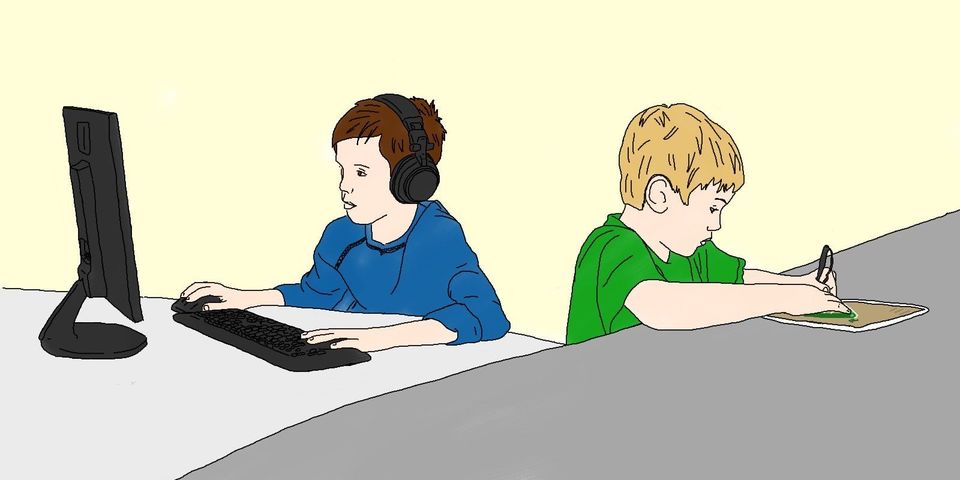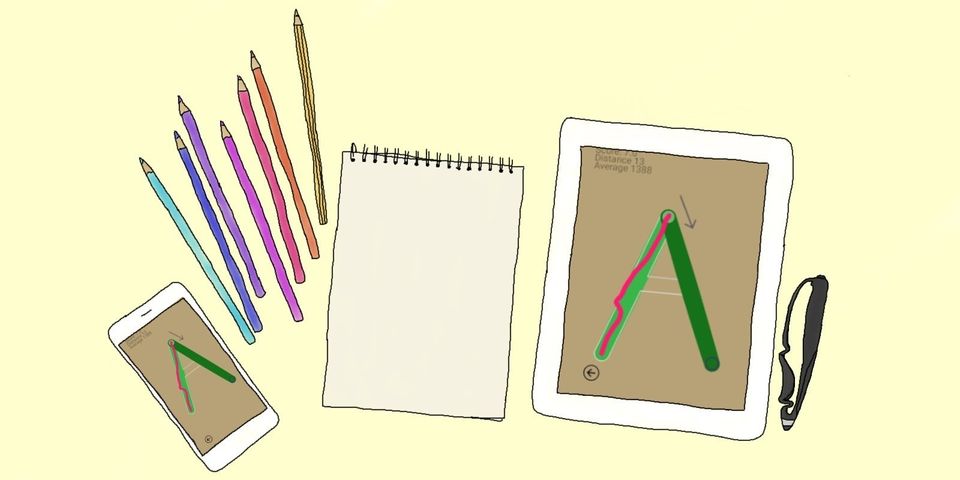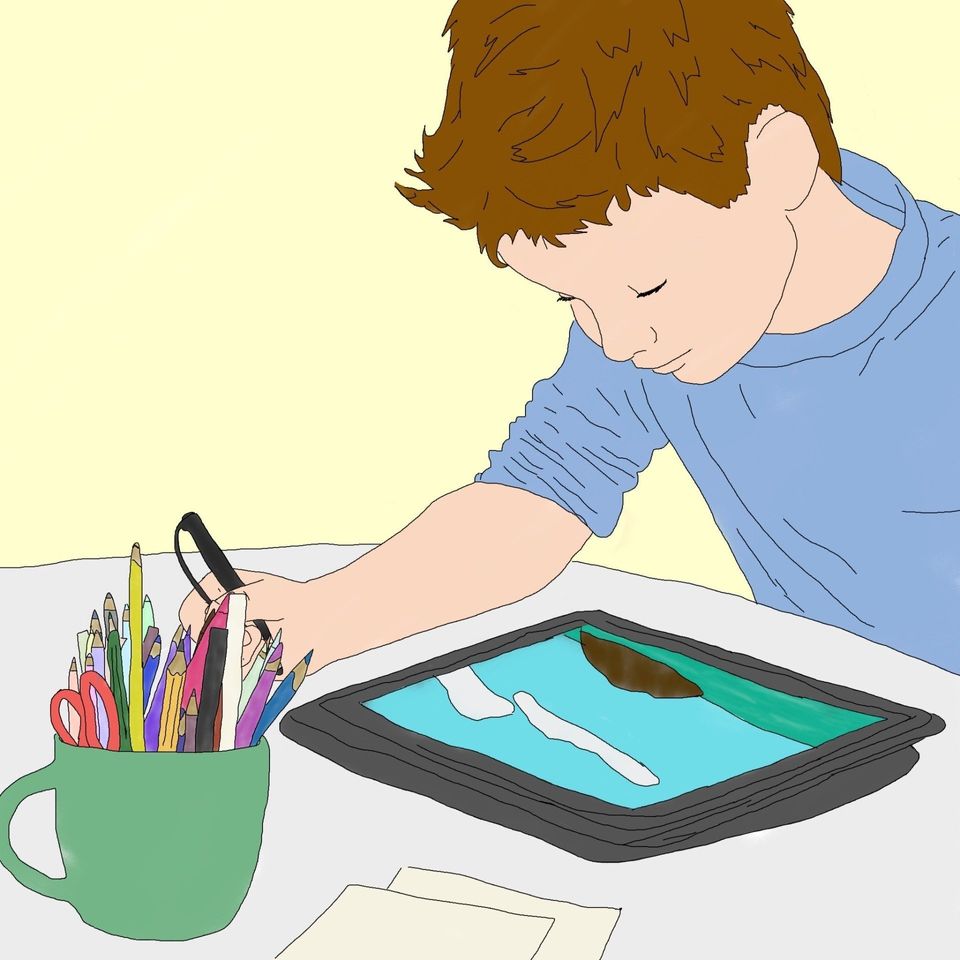Type, Scroll, Swipe: Why Write?
May 13, 2020
As we spend more time on digital devices and less time with pen and paper, could the future of handwriting be under threat? With the temptations of typing, scrolling and swiping, how can we ensure students develop the necessary fine motor skills they traditionally develop through handwriting?

It’s every 21st century parent’s battle: balancing children’s screen time with child development off-screen. But as adults, we are guilty of spending around 11 hours a day staring at a computer, mobile or tablet screen. In fact, the average office worker will spend almost 1,700 hours a year at their computer screen. This figure is only set to increase as more and more jobs provide work from home opportunities.
As our daily lives make way for technology, there is far less need for handwriting. When was the last time you had to handwrite something beyond a scribbled note or to sign a form? If the role of school is to best prepare students for the working world, why, in an ever-increasingly digital world, should children learn to handwrite? Why do we persevere with the archaic practice when so many children face handwriting difficulties?
In recent years, many schools across the world have abandoned cursive handwriting lessons and branded the practice outdated and a waste of time. In Finland, these lessons have been completely replaced by typing practice. In Wales, it was announced that paper exams are set to be replaced by computer-based assessment by 2026. But there are major neural differences between the way an individual produces handwritten or typed language.
Learning to write by hand is an important developmental milestone for children. Holding a pen or pencil with the appropriate grip and applying the appropriate pressure builds fine motor skills and strengthens the small muscles in the hand.
Fine motor skills are key to efficiently complete everyday tasks far beyond the classroom, including tying shoelaces, opening lunch boxes and even manipulating small objects. Children struggling to develop fine motor skills will therefore have limited play options and be unable to develop independence through important life skills, such as dressing and hygiene.
Typing does not develop fine motor skills in the same way and research suggests that children who struggle with handwriting may also struggle with typing. Many of the prerequisites for typing are the same as for writing, such as fine motor skills, letter recognition and hand-eye coordination. On its own, typing is therefore an unhelpful alternative for children struggling with handwriting.
There is also an unexpected impact on reading for children with writing difficulties. Handwriting is a multisensory activity. As a child writes a letter or word, the small muscles of the hand communicate with the language processing areas in the brain. The effect is heightened when children ‘sound out’ letters as they write. This multisensory activity engages the language areas of the brain and encourages memory and recall far more than the act of typing alone.
For parents and teachers of young children, the question should not be ‘either/or’ in the debate about handwriting and typing. Handwriting is important and always will be. Equally, it is undeniable that there is a pressing need for digital skills in the 21st century.
It is important to support children struggling with writing to develop the necessary fine motor skills to reach their developmental milestones. This doesn’t have to be without technology! Many apps and tools, including Scriba and its software, have been developed to simultaneously support both traditional and digital literacy.
Dr Sally Payne, an advisor to the Royal College of Occupational Therapists, explains that children struggling to write commonly complain of pain in their wrist or hand. She attributes this pain to “unusual grip techniques”, rather than the preferred tripod grip. A correct grasp of the pen is natural and will support children to write fluently, comfortably and at speed.
Kim Griffin, an occupational therapist, reports that children often struggle to modify their grip after the age of 7- so it’s a good idea to start early! Her website Griffin Occupational Therapy
has a range of resources available for parents and teachers to better understand pencil grip development and tips on how to best promote the tripod grip.
Scriba can support children to develop this skill. Scriba’s form and shape evolved from the ergonomic goal to promote the tripod grip. It can be a great passage to penmanship for children who don’t enjoy using pens and pencils. The Scriba team are currently collaborating with Trinity College Dublin and the Irish National Paediatric Hospital on a study to qualify the benefits of Scriba in children’s fine motor skill development. Find out more about Scriba and dyspraxia here.
Articles

The United Nations has described the disruption to education caused by the pandemic as ‘unparalleled’. At the virus’ worldwide peak in April, it is estimated that over 90% of all enrolled learners, from kindergarten to bachelors and beyond, had their education affected by school closures and the pandemic (UNESCO). For many university students and older children, they have had to adapt quickly to online learning. They can keep in touch with their peers and teachers online and continue their studies, albeit in a highly modified way. As challenging as this may be, this experience will help equip them for a future that is increasingly online. For parents of younger children, they are assuming a new role: their child’s home school teacher. This is in addition to their usual childcare and household duties, their work responsibilities and often emotional and financial worries caused by the pandemic. Stressful? Yes. The good, and somewhat surprising, news? The experts advise that you don’t teach your children - at least not in the way you might expect.

If the recent outbreak of Covid-19 has taught us anything, it's that many adults do not wash their hands effectively. It has never been more important that we support our children to develop good personal hygiene to keep themselves and our families safe. This seemingly easy task can be very difficult for children with fine motor skill difficulties. In this article, we explore some ideas to support your child with hand washing.

Lockdown has brought the digital future into the now. Online shopping, entertainment, education and more have moved from the periphery to the mainstream to, in many cases, the only option. With the necessity of social distancing looking to continue for many months, it appears that this rapid digital revolution is here to stay. This means that life as we know it, in most of its sectors, has changed forever. In order to survive, businesses are having to adapt rapidly, embrace technology and look to the future. Architecture is no exception. There has been a widespread adoption of technology and VR over the past few months in response to the lockdown across all of society. Elderly grandparents who were once resistant to adopt new technologies talk of “Zooming” and have started video chatting with their family members to combat loneliness. Art galleries that were once considered stuffy or pretentious are now pioneers in VR technology, with Google Art & Culture offering tours of London’s National Gallery or the Musee D’Orsay in Paris. These virtual tours deliver art in a dynamic new way that can be far more engaging than regular photos. Critics have applauded the panoramic and immersive views of gallery building and exhibitions which work well for rendering of 2 dimensional art, however impressions of sculpture is somewhat lacklustre. With VR technology, users can enjoy a truly immersive experience in the comforts, and safety, of their own home. The COVID-19 pandemic has served as an accelerant for the arts and entertainment industries to embrace VR.





